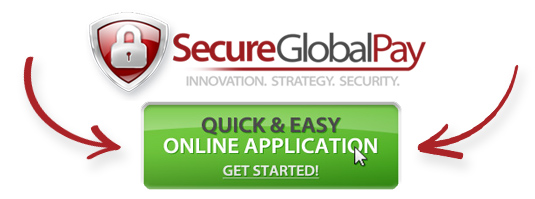
Offshore High-Risk Merchant Account Providers
If you operate a high-risk business outside the country where the services are performed, your chances of opening a merchant account could be slim to none. Make sure you fully understand the difference between opening a merchant account in your home country and working with various offshore high-risk merchant account providers.
Sometimes, applying for a high-risk merchant payments account can be frustrating and challenging. Oftentimes, an application is declined for the following reasons:
- Return ratio/high chargeback rate
- Poor or no credit history (business or personal)
- Business owner resides in a different country or is not a citizen of the United States
- Irregular sales pattern
- Transactions in foreign or international currencies
- Transactions are processed at a high amount or volume
An offshore high-risk payment service provider offers a different option by allowing you to open a merchant account, despite the issues stated above.

International merchant services can be a scary proposition for some business owners not familiar with the industry. They usually believe nothing good comes out of any business that handles their money outside the country they reside in.
It is true that fraud is a major reason why acquiring banks refuse to work with high-risk businesses. And opening merchant accounts with selected offshore high-risk merchant account providers does not eliminate this risk.
But just as you would perform due diligence before signing up with a merchant account service provider, the same thing is expected with a merchant account provider offering international services.
Offshore payment companies often have open-minded options that U.S. banks simply do not have. Oftentimes, they are less strict when it comes to working with high-risk businesses depending on circumstances.
If you are struggling to partner with a payment processing platform for your high-risk business and would like to try out the services of an offshore merchant account, here is what you need to know.
What is an Offshore High-Risk Merchant Account?
It is a standard merchant account that allows you to accept debit, credit, and other electronic payments safely. The only difference is, you will be working with international banks and payment service providers located outside of the United States.
Domestic Account Vs Offshore Account
The major difference between a domestic merchant account and an offshore merchant account is pretty straightforward.
The acquiring bank that issues domestic merchant accounts resides in the same country as the merchant performs their business.
Alternatively, the acquiring bank that opens an offshore account resides in the same offshore country.
For example, if a merchant in New York applies for a merchant account with an acquiring bank in Cyprus. It is an offshore merchant account. If the same New York-based business owner applies for a merchant account with an acquiring bank in California. It is a domestic merchant account.

Advantages of Offshore Merchant Accounts
One strong advantage an offshore high-risk merchant account has over its domestic counterpart is that it provides additional processing bandwidth. If a merchant may not be able to get approved for additional processing solutions or higher volume caps in their domestic country, they often apply for an international merchant account
Other advantages of getting an offshore merchant account for your online business include:
Offshore Payment Processing: By processing credit cards, debit cards, and other electronic payments abroad, you get to accept payments in multiple currencies.
No Taxes or Low Taxes: With a merchant account in another country like the Cayman Islands, you can benefit from the zero tax requirements there.
No Volume Caps for Transactions: Acquiring banks outside the country might not cap how many credit card transactions you can process monthly. This allows your business to reach its full potential and maximize profits.
Trading Restrictions & Strict Underwriting
Offshore banks are not always limited by trading restrictions. This allows high-risk industry merchants to do business with higher payment processing caps or no caps at all.
In the U.S. new merchants or merchants with low processing history are usually offered an account with a processing limit of up to $35,000.
This is a ridiculous threshold for businesses that deal with high ticket items or merchants that handle a massive volume of transactions.
For these types of businesses, high-risk accounts are necessary, and talking to offshore high-risk merchant account providers should be a strong consideration.
The underwriting process of certain offshore banks is also often not as gritty as domestic banks. In other words, offshore underwriters get to approve merchant accounts for businesses that would have been ineligible with local banks.
To this extent, offshore banks are often able to overlook chargeback ratios that are not too excessive.
Beneficiaries of Offshore Merchant Accounts
Even if a high-risk business has a domestic merchant account already, it does not hurt to have an offshore payment solution.
Business conglomerates like Google, Microsoft, and Apple use offshore banking and carious business processing solutions to reduce their tax burdens in the U.S. They do this by cleverly establishing international branches in tax-favorable countries to service their market segments overseas.
High-risk businesses that can benefit from offshore payment processing include:
- Background checks
- Debt collection agencies
- Accounting and bookkeeping
- Credit repair
- Electronic cigarettes
- Magazine subscriptions
- CBD merchant offshore and hemp sellers
- Hair restoration
- Online auctions
- Dating
- Payday loans
- Furniture
- Skincare products
- Government grants and financial aid
- Web hosting
- Telemedicine
- Tobacco and cigarette sellers
- Firearm retailers
- Travel
- Coupon Membership Clubs
- Merchant Account for Travel

Questions to Ask Offshore Merchant Account Providers
Before disclosing your personal information to any offshore payment processor, here are some questions to help you make the right choice.
- Which country is the bank located in?
- What is the payout frequency and has it been late before?
- What type of payment options does the account accept?
- Do you need to register as an offshore corporation and can the provider handle the registration?
- What reserves are required and what are the terms?
- What does it cost to set up and integrate the payment gateway into your business model?
- Can you get a comprehensive list of all rates and fees?
- What payment gateway and virtual terminal options are available?
- Where will transactions be authorized?
How Long Does an Application Approval Take?
Oftentimes, a high-risk merchant account gets approved in a matter of days, but it is very rare. Oftentimes, there are exceptions like the need for additional underwriting or supporting docs which can stretch approvals by up to 10 business days or more.
High-Risk Merchant Account Approved Now What?
Review your bank statements every month and compare fees as well as rates for previous months. This is to confirm that your terms and agreements remain the same and have not changed.
If required, keep an eye on your reserve account and make sure you fully understand the terms of repayment. A simple spreadsheet to track ins and outs can help.
It should include the following:
- Reserve account requirements, dates of release, total sum on hold
- Wire, monthly and annual fees
- Effective rate – add all rates and fees charged and divide this number by the total sales volume processed. This will give you an effective processing rate.
- Have there been funding delays and were the reasons justified?
- Anytime you find inconsistencies, call customer support and have it clarified.



